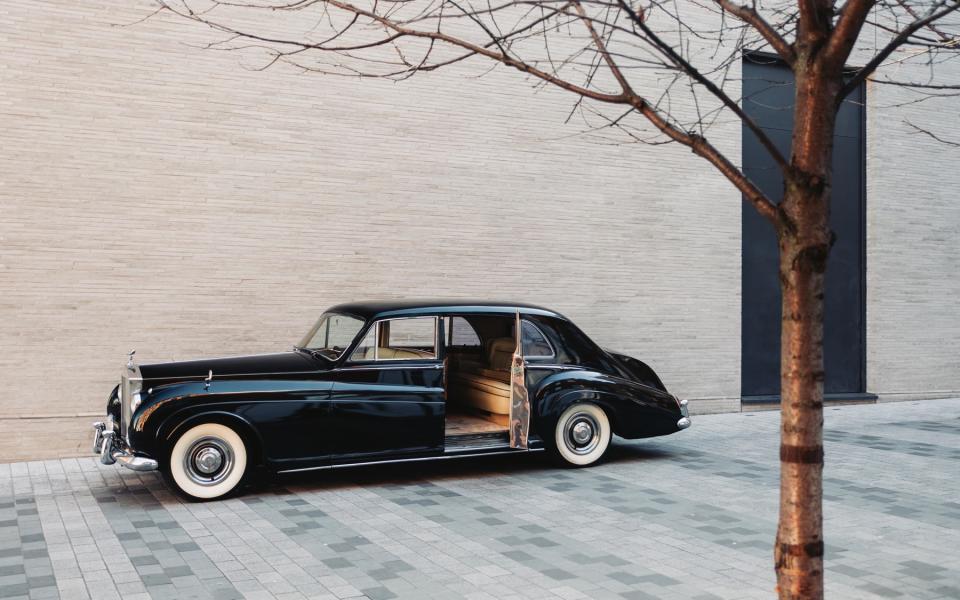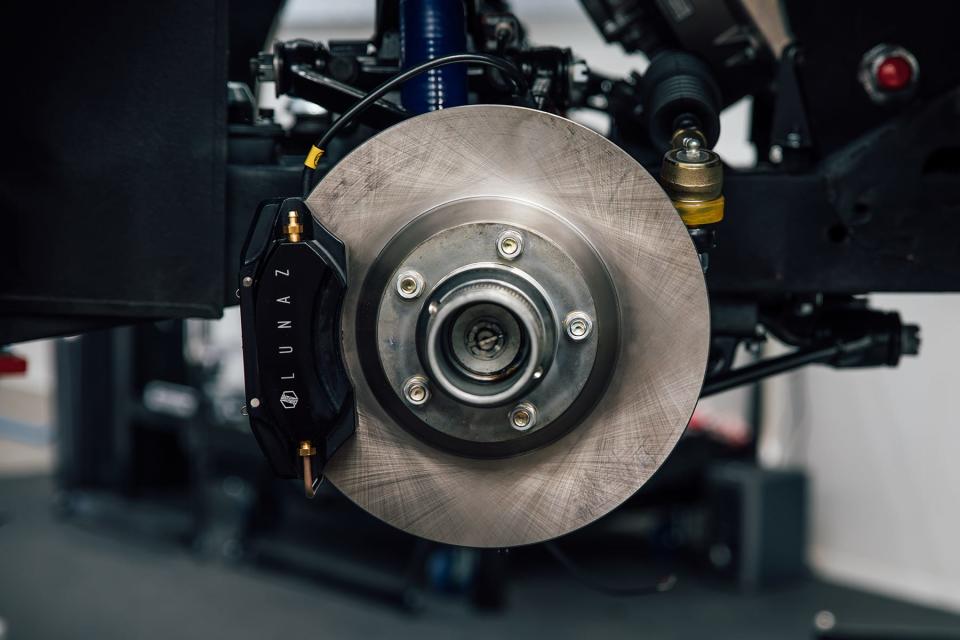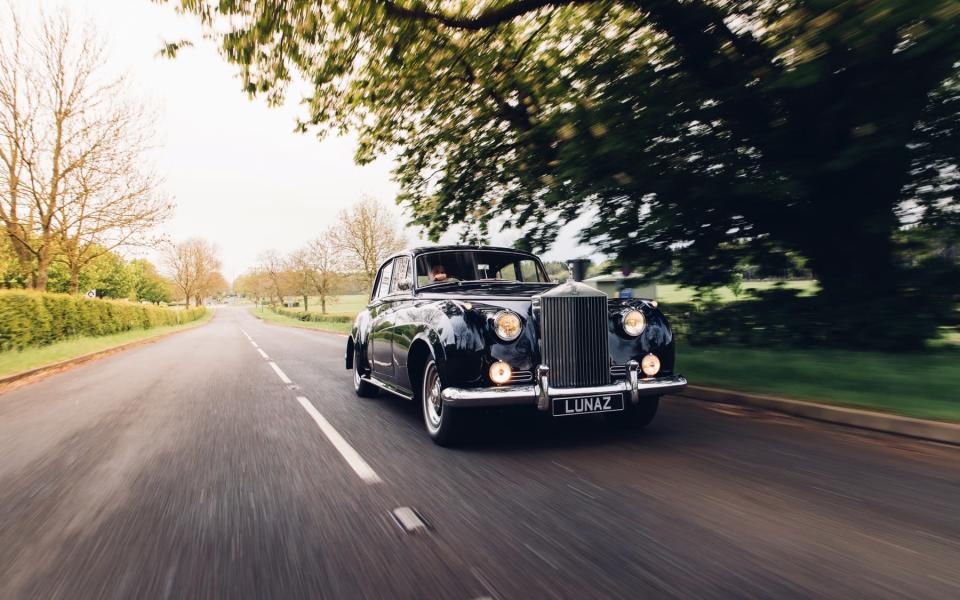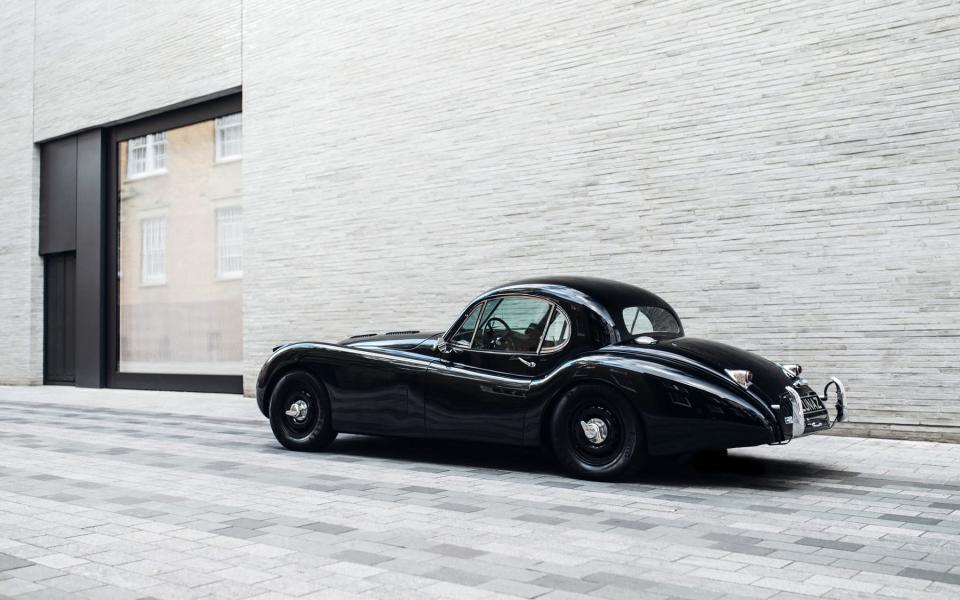Lunaz is electrifying beautiful but unreliable classic cars
It's starting with a Jaguar XK120 and Rolls-Royce Phantom V.
Few would question the beauty of classic cars from the 1950s and 60s. Unfortunately, these vehicles are increasingly rare on British roads as they fall into disrepair or become a treasured possession that is only driven on weekends, after hours of meticulous maintenance in a private garage. David Lorenz, however, is desperate to keep classic cars on the road. He's driven them for years, knowing full well they'll probably break down every six months. "It didn't really bother me," Lorenz said. "I could laugh it off and say it was part of the experience of owning a classic."
One particular mid-drive malfunction stung, though. Lorenz recalls sitting on the side of the road, in the freezing cold, with no vehicular heating to keep him warm. Breakdown services showed up 90 minutes later. "My brain was going 'How do we change this?'" he said. In that moment, Lorenz realized that classic cars would eventually become too hard to fix and, therefore, inaccessible to his daughter Luna's generation. "She's just not going to [own] these types of vehicles," he thought. "Because people will not continue like this."
Instead of wallowing in this automotive bleakness, Lorenz sought a solution. He stewed on the idea of electric conversions until April 2018, when Prince Harry and Meghan Markle drove a Jaguar E-Type Concept Zero at their wedding. "That really cemented it as an idea I had to go ahead with," Lorenz said.

Lunaz, named for Lorenz's daughter, is currently working on two classic cars: a Jaguar XK120 and Rolls-Royce Phantom V. From afar, they look identical to the vehicles that rolled off the production line in 1953 and 1961 respectively. Under the hood, though, almost everything has changed. The XK120, which is drivable and closer to completion than the Phantom V, has a twin motor system that can generate 700NM (or 516 in pound-feet) of torque and 375BHP. It's powered by an 80 kWH battery pack, and the larger Phantom V has a 120 kWH version (the cheapest Tesla Model 3, for comparison, comes with a 54 kWh battery, at the moment.)
Lunaz has promised modern conveniences, too, like cruise control, CHAdeMO-socket fast charging and regenerative braking.
Lunaz has promised modern conveniences like cruise control, fast charging and regenerative braking.
Lorenz is developing the cars with Jon Hilton, Lunaz's managing director and technical lead. He started his career at Rolls-Royce before joining Cosworth's Formula 1 team as an engine designer. Hilton rose to chief engineer before switching to the Arrows Formula 1 crew and, as technical director, the Renault team that secured back-to-back titles for Fernando Alonso in 2005 and 2006. Hilton then left to run Flybrid, a company that made regenerative-braking flywheel systems. Torotrak acquired the business in 2013, after which Hilton slowly scaled back his involvement before taking a short-lived retirement.
Lorenz, Hilton and the rest of the Lunaz team have a meticulous conversion process. First, they place the car on corner weight scales to understand its original weight distribution and handling. The company then removes everything that will never go back inside the car -- the gas-guzzling engine, gearbox, fuel tank and exhaust system, for instance -- and weighs the car again. The second set of measurements reveal roughly how much weight they need to allocate to the front and rear battery packs.
"Then we can start trying to find the space," Hilton told Engadget.

The team takes a 3D scan of the car and uses professional CAD (computer-aided design) software Solidworks to model each part and figure out where it should sit in the car. "Sometimes we end up just a little bit heavier than [the car] used to be, but with that weight evenly distributed between the front and rear axle, we're approximately respecting its original weight distribution," Hilton explained. Lunaz's XK120 will be faster than the original; however, respecting the old weight distribution should give it broadly similar handling and that nebulous driving 'feel' on the road.
The Rolls-Royce Phantom V is a four-door limousine that was used by, among other high-profile owners, Queen Elizabeth II and the Queen Mother as an official state car. The Jaguar XK120, meanwhile, is a two-seater roadster designed for speed. These wildly different characteristics pose unique challenges and make each model "an entirely bespoke build," according to James Warren, director of communications at Lunaz.
But the company is trying to be efficient with its design and manufacturing pipeline. It's created a modular set of powertrain components, for instance, for use in the Phantom V, XK120 and future converted vehicles. Lunaz is also building its own battery packs in a way that can scale to different cars. "We haven't got the choice to modify the car to fit the battery," Hilton said. "We have to modify the battery to fit the car. So we started off with the assumption that [the battery packs] have to be ours."
Lunaz isn't a large business and doesn't, therefore, have plans for a mass-market EV "platform" like VW. But it does want a technical foundation to apply to all of its cars and minimize future testing. "It's less of a cost thing in the way that mass [car manufacturers] are going about it," Warren said. "It's more about finding efficiencies in the build process."

Before starting Lunaz, Lorenz looked at other startups known for electric conversions. He noticed that many were simply grabbing parts from wrecked Teslas and throwing them into classic cars. "They didn't have a good understanding of the products they were dealing with," Lorenz said. "And they were dealing with [a] high voltage [vehicle], so it just seemed like quite a dangerous build to me."
Lunaz is taking a different approach. According to Hilton, the company is following UNECE Regulation 100, safety requirements for electric powertrains set by the United Nations. When the car turns on, it takes 192 voltage measurements and checks the temperature at 96 points across the battery packs. There are smaller safety details, too. You can't drive the car with the charger plugged in, and if you press the brake and throttle at the same time, you'll only get the brakes, rather than a potentially dangerous mix of the two.
Some of these features might sound basic, but they're not guaranteed by many companies making electrified classic cars. "Unless you're being really silly, you won't be able to damage it," Hilton said. "It will turn itself off before it gets to a place where you could do it any harm. All of that stuff takes a lot of time to develop, but it's necessary to build a product that's suitable for putting out into the hands of the general public."
"Unless you're being really silly, you won't be able to damage it."
Performance and safety is only one half of the equation. To fulfil its mission of a modern-but-classic car manufacturer, Lunaz has become a luxury interior specialist, too. For Lorenz, that means subtle upgrades that aren't immediately noticeable if you peer in through the driver-side window. In the XK120, for instance, Lunaz converted the fuel gauge and rev counters into battery and power meters. The walnut-veneer dashboard now has a touchscreen that supports satellite navigation, music streaming and phone connectivity over Bluetooth.
The insides of the doors, meanwhile, have pockets for gadgets -- think smartphones, tablets and other everyday carry items -- made from woven leather and other materials prevalent in the early 1950s. "When you get into one of our cars, if it's from 1953, it feels like you're in a car from 1953," Lorenz promised.

The response from the motoring community has surprised Lunaz. The Phantom V it acquired had "an extremely limited history," according to Lorenz, so he was forced to ask a nearby Rolls-Royce enthusiast club for help. "He was a little nervous," Warren recalled. Lorenz was upfront about the company's ambition and surprised by how interested and supportive members were. "They just said, 'This is incredible,'" Lorenz said. "This is going to mean that cars like the Phantom V are going to be on our roads more, because you don't see them [at the moment]. People don't drive them. They're in dry storage."
The club members have since visited the Lunaz workshop in Silverstone Park and lent the team specialist tools for the car. "It's been a really, really great relationship with them," Lorenz said. Inevitably, though, the company has encountered some skeptical onlookers, too. But most are encouraged and supportive of the idea once they've chatted with the team, according to Hilton. "[People] who started off in the position of 'I'm not sure you should be doing this,' have afterwards said, 'You know, I have to think about this differently. This is a brand-new electric car. It just happens to look like a beautiful old 1953 XK120,'" he said.
Lunaz hopes to deliver its first cars in December 2020. Lorenz says the Jaguar XK120, which the team can already test drive, looks "fully finished" to the untrained eye. But for Hilton, there's still a long way to go. The technical lead wants to push the car's performance and improve the software that will be available at launch. "We're adding new features every day," Hilton said. Like Tesla and other modern EV manufacturers, Lunaz hopes to update its cars with iPhone-style over-the-air updates, too. "We'll be adding new features, still, in 10 years' time," he said.
Lunaz plans to scale its business slowly. The company will add three classic models to its lineup every year and build just 10 of each variety annually. "So we're looking at 30, then 50, then somewhere near 100 cars per year by 2025," Hilton said. "It's not a big volume business, but, of course, these are very expensive things, so it's still quite a big business."

With a starting price of £350,000 (roughly $454,291), Lunaz's vehicles will be unattainable for the vast majority of motorists. And there will always be those who think electric conversions are blasphemy. After delivering the first cars, though, the company will have completed its mission of keeping classic cars on the road and out of scrap yards and musty garages. While astronomically expensive, they'll be more practical for people who love vintage designs but don't have a mechanical background.
"These vehicles should be handed down to my daughter's generation and future generations," Lorenz said. "If there aren't companies like us doing [conversions] like this, these iconic classics won't be around in 40 years."



